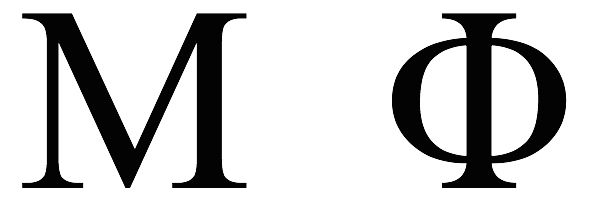Group Meeting
Welcome to the mathematical physics group meeting!
We extend a warm welcome to all enthusiasts of mathematical physics seeking to explore the profound synergy between mathematics and physics. Our group meeting serves as a dynamic platform to engage in rigorous discussions and advancements of theoretical physics.
Purpose and scope:
The primary objective of the mathematical physics group meeting is to provide a forum for participants to share and discuss their own research in the realm of mathematical physics. This collaborative environment encourages problem-solving, and enhances the collective understanding of intricate concepts at the intersection of mathematics and physics.
Meeting schedule:
Our group meetings are held every Friday at 11 am in INF 205 Seminar Room 10. You can find more information in the table below.
Want to give a talk?
We are happy to have guest speakers. If you want to give an informal talk in our seminar, please contact: rsenghaas@mathi.uni-heidelberg.de
Schedule WS25/26
Universität Heidelberg
In this talk, I’ll explain how the pure spinor formalism can be viewed as a concrete example of Koszul duality in action. This viewpoint helps clarify the algebraic and geometric structures underlying supersymmetric theories. It also points toward a broader picture linking supersymmetry, derived geometry, and deformation theory in a natural way.
Universität Heidelberg
I present the correspondence between pure spinor superfields and the more familiar construction of superfields via constraints. We will also touch upon the natural emergence of BRST ghosts in the formalism.
Universität Heidelberg
The pure spinor formalism has proven very useful for describing supersymmetric field theories, but its connection to the BV formalism is still not fully understood. In this talk, I will outline how one might extend the pure spinor approach to include the BV framework, naturally incorporating fields, ghosts, and antifields in a unified way. We will see how ideas from Koszul duality guide this construction, and I will present some low-dimensional examples to illustrate the emerging picture. This approach opens a path toward a systematic, homological understanding of supersymmetric theories.
SR 8
University of Southern Denmark
The theory of Bridgeland stability conditions assigns a complex manifold to the derived category of coherent sheaves on a smooth projective variety. The structure of this complex manifold is central for applications to algebraic geometry, but describing even a connected component is often a difficult, open problem. In this talk, I will give a proposal for the stability manifold of any non-commutative abelian variety in terms of an auxiliary generalized complex torus, extending a conjecture of Kontsevich. As applications, I will describe the stability manifold for many abelian threefolds, and I will complete the description of mirror symmetry for abelian varieties, after Golyshev-Lunts-Orlov. This is based on work in progress, joint with Fabian Haiden.
Part of Heidelberg Algebraic Geometry Seminar series: https://sites.google.com/view/heidelbergag/algebraic-geometry-seminar?authuser=0
TU München
SR8
Universität Heidelberg
I will discuss an ongoing project with Adrian Clingher and Andreas Malmendier in which we determine explicit generators for rings of modular forms associated with certain moduli spaces of lattice-polarized K3 surfaces. The K3 surfaces in question carry a canonical Jacobian elliptic fibration and our generators appear as coefficients in the Weierstrass equations describing those fibrations. The main tool is Borcherds' construction of automorphic products that vanish on Noether--Lefschetz divisors.
Part of Heidelberg Algebraic Geometry Seminar series: https://sites.google.com/view/heidelbergag/algebraic-geometry-seminar?authuser=0
The Chow motive (with Fp-coefficients) of a generically split
homogeneous G-variety Y, for a semisimple linear algebraic group
G of inner type, splits into a direct sum of twists of the upper motive
of the variety of complete G-flags X.
This indecomposable motive is studied by investigating its splitting
behaviour into twisted Tate motives upon extension to a splitting field.
This behaviour is controlled by the J-invariant of the group G.
A new proof of this fact is obtained by analysing the subring of rational
cycles Ch∗(X)rat⊆Ch∗(X)
and constructing an Fp-basis for it.
The J-invariant, usually defined via a Borel subgroup of a split form
G0 of G, may instead be defined using an arbitrary special parabolic
subgroup of G0.
The equivalence of these two definitions is established.
Harvard University
University of Washington
Universität Heidelberg
Universität Heidelberg
The title may sound like a question for a psychologist, but it’s actually about a beautiful problem in algebraic geometry and mathematical physics. “Mum” here stands for Mumford, as in Mumford curves, Mumford–Tate groups, or moduli spaces à la Mumford. The talk explores a family of spaces arising in supersymmetric field theory and mirror symmetry — spaces that, in a precise sense, ask to be rational.
We’ll discuss what it means for a space to be rational, why physicists keep running into moduli spaces that are “almost” rational, and how tools from derived geometry, wall-crossing, and representation theory enter the picture. No prior knowledge of supersymmetry is needed — just a willingness to find out whether all Mums are, in fact, rational.
Schedule SS24
We have a new format this summer semester. We will meet at 12:00 CEST on even-numbered calendar weeks to discuss and present current interests, ideas, and problems. Zoom will be our platform of choice. We are slightly changing the format: instead of formal presentations, we would like to explore problems, interesting aspects, or mathematically fascinating questions together in a relaxed atmosphere.
Schedule WS23/24
Heidelberg University
I’ll ask you to come join me on a short joyride on total cotangent (super)geometries. If we’re lucky, we will be able to spot the notoriously elusive Atiyah class disguised as an ext group, together with several other wild beasts living in the woods surrounding Heidelber(g)ezin.
Heidelberg University
We will present to novel approaches in the Z2-graded unitary representation theory of super Lie algebras of type A(m∣n). In the first part of the talk, we demystify the zigzagging appearing in the classification of unitary supermodules. In the second part, we confirm our results of the last talk using DS functor and translation functor techniques.
Within the ever-shifting landscape of this post-modern playground, we uncover the hidden threads that tie Adinkras and Koszul duality in a tapestry of unimagined elegance. The boundaries between theoretical physics and abstract mathematics blur, and the very notion of 'discipline' metamorphoses into an ever-fluid idea.
In this kaleidoscopic endeavor, we offer a prism through which Adinkras and Koszul duality emerge as kindred spirits, inviting us to revel in their harmonious chaos. As we surf the waves of post-modern inquiry, we unearth the potential for a renewed perspective on these enigmatic realms. This is more than an academic exercise; it's a testament to the enduring allure of eclecticism and the never-ending quest to expand the boundaries of knowledge.
As we conclude this abstract, we celebrate the post-modern spirit that keeps us guessing, challenging, and reshaping our understanding of the universe. In the epoch of eclectic inquiry, the boundaries are permeable, and knowledge is a kaleidoscope of endless possibilities.
Heidelberg University
tba
ITP
Kinetic mixing between gauge fields of different U(1) factors is a well-studied phenomenon in 4d EFT. In string compactifications with U(1)s from sequestered D-brane sectors, kinetic mixing becomes a key target for the UV prediction of a phenomenologically important EFT operator. Surprisingly, in many cases kinetic mixing is absent due to a non-trivial cancellation. In particular, D3-D3 kinetic mixing in type-IIB vanishes while D3-anti-D3 mixing does not. This follows both from exact CFT calculations on tori as well as from a leading-order 10d supergravity analysis, where the key cancellation is between the C2 and B2 contribution. We take the latter approach, which is the only one available in realistic Calabi-Yau settings, to a higher level of precision by including sub-leading terms of the brane action and allowing for non-vanishing C0. The exact cancellation persists, which we argue to be the result of SL(2,R) self-duality. We note that a B2C2 term on the D3-brane, which is often missing in the recent literature, is essential to obtain the correct zero result. Finally, allowing for SL(2,R)-breaking fluxes, kinetic mixing between D3-branes arises at a volume-suppressed level. We provide basic explicit formulae, both for kinetic as well as magnetic mixing, leaving the study of phenomenologically relevant, more complex situations for the future.
tba
Heidelberg University
In general, a Lagrangian does not fully characterise a 4d gauge theory; for instance, in Yang-Mills theories with adjoint matter, the Lagrangian does not determine whether the gauge group is SU(N), PSU(N) or any intermediate SU(N)/G where G is a subgroup of the center. In order to define a 4d gauge theory, one needs to choose a maximal collection of Wilson-'t Hooft line operators, local with respect to dynamical particles and mutually local; this choice in turn determines the global form of the gauge group. All of this can be reformulated in terms of one-form global symmetries. Choices of global structures are encoded in a topological field theory in 5d dubbed SymTFT, which allows to compute the one-form symmetry even in non-Lagrangian gauge theories, provided they have a well-behaved Coulomb phase in the IR. This is the case for N=3 S-folds, an interesting class of 4d QFTs with N=3 supersymmetries constructed in type IIB string theory through a procedure generalizing orientifolds. The one-form symmetries and dualities of such theories hints for the existence of non-invertible symmetry defects. My goal is to motivate and explain the method and results of 2303.07299 [hep-th].
Heidelberg University
We introduce some seemingly new, and arguably quite poetic, biochorismatic terminology to discuss the correspondence between linear partitions, understood as (C×)2-fixed points of Hilbn(C2⊂C3), and anomaly free exponential networks attached to the quadratically framed pair of pants. (Joint with Raphael, Mauricio and Sibasish)
tba
Schedule SS23
Universität Mannheim
Dubrovin Frobenius manifold is a geometric interpretation of a remarkable system of differential equations, called WDVV equations. Since the beginning of the nineties, there has been a continuous exchange of ideas from fields that are not trivially related to each other, such as: Topological quantum field theory, non-linear waves, singularity theory, random matrices theory, integrable hier- archies of KdV type, and Painleve equations. Dubrovin Frobenius manifolds theory is the bridge between them. In this talk, I will review the notion of Dubrovin-Frobenius manifolds and its relationship with finite reflection groups and its extensions, isomonodromic deformation equations and Integrable hier- archy of KdV type.
Université Paris Sorbonne Nord
First we recall notions from the BV-formalism. For finite dimensional toy models of field theories we indicate how this can i) describe the classical observables and ii) gives a mathematical notion of the path integral, which can be related to Feynman diagrams. In the second part we formulate the Loday-Quillen-Tsygan (LQT) theorem in the language of BV-algebras: Given a cyclic A∞ algebra A, for every N, glN(A) is a cyclic L∞ algebra and the Lie-cochains have a BV-structure in a standard way. There also exists the structure of a BV-algebra on an object built from cyclic cohomology of A, which we explain in detail. The LQT theorem gives us a map of BV-algebras between these two objects, for all N. Lastly we indicate how these ideas relate to a formulation of closed string field theory of topological string theories. This talk is a survey based on the works of Gwilliam-Johnson-Freyd (1202.1554v2), Ginot-Gwilliam-Hamilton-Zeinalian (2108.12109v1) and Costello (0509264v2).
Heidelberg University
We construct a generalization of Poisson--Chern--Simons theory, defined on any supermanifold equipped with an appropriate filtration of the tangent bundle. Our construction recovers interacting eleven-dimensional supergravity in Cederwall's formulation, as well as all possible twists of the theory, and does so in a uniform and geometric fashion. Among other things, this proves that Costello's description of the maximal twist is the twist of eleven-dimensional supergravity in its pure spinor description. It also provides a pure spinor lift of the interactions in the minimally twisted theory. Our techniques enhance the BV formulation of the interactions of each theory to a homotopy Poisson structure by defining a compatible graded-commutative product; this suggests interpretations in terms of deformations of geometric structures on superspace, and provides concrete evidence for a first-quantized origin of the theories.
Heidelberg University
We will discuss real structures on the moduli space of stable curves given by anti-holomorphic involutions and look at the orientability of their fixed point locus and its real intersection theory.
Heidelberg University
tba
University of Edinburgh
Heidelberg University
Heidelberg University
We study the problem of counting maps between complex projective spaces from the point of view of quasimaps. The advantage is that the space of quasimaps is itself a complex projective space. To obtain the count of actual maps one has to subtract the contributions of all “non-maps”. In certain cases, this can be done via excess intersection theory.
This talk is based on ongoing work with O. Chekeres, S. Kandel, A. Losev, P. Mnev and K. Wernli
Heidelberg University



